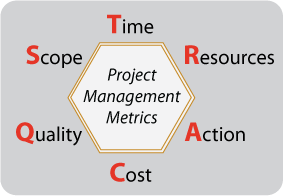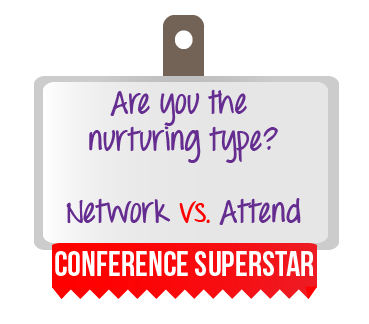3 Ways Client Surveys Build Stronger Relationships
 Each of your clients, like you, are individuals that have a unique definition for what a positive client service experience means to them. We can no longer treat everyone the same way – it just doesn’t work! Sending client surveys gives your firm the opportunity to ask clients what that terrific experience looks like to them – each of them. It also gives you the chance to show that your firm is serious about their satisfaction and to build stronger relationships. As a result of the thousands of survey results and comments we’ve seen, we wanted to share with you the top 3 reasons clients want you to send them a client survey.
Each of your clients, like you, are individuals that have a unique definition for what a positive client service experience means to them. We can no longer treat everyone the same way – it just doesn’t work! Sending client surveys gives your firm the opportunity to ask clients what that terrific experience looks like to them – each of them. It also gives you the chance to show that your firm is serious about their satisfaction and to build stronger relationships. As a result of the thousands of survey results and comments we’ve seen, we wanted to share with you the top 3 reasons clients want you to send them a client survey.
-
Ease or Dis-ease: Your clients want to be at ease in their relationship with you. They hired your firm in the first place because they believed you could provide them with something they needed. So what happens when something is not exactly right? We all know that tension we feel when some relationship we have is not flowing smoothly. Your clients feel the same way. When you send them a client survey and give them the chance to let you know that something could be a little better, it creates a greater sense of ease for them because you gave them a voice.
-
Build Trust: Trust is a funny thing, it takes time to build and usually involves both positive (and negative) interactions. We all want to be seen as ‘an expert’ for our clients and sometimes may think this means that there are never any miss-steps or misunderstandings. Clients understand that nobody is perfect – what they are looking for is corrective action when something has not gone as expected. The interactions you have with your clients often have consequences you may not even be aware of – how they look to their team, their boss, maybe their clients. When you send a client survey and follow up in a timely manner, your clients grow in their trust that you will handle situations in a positive, professional manner.
-
Creates Affirmation: Everybody wants to be appreciated and acknowledged. In fact it is such a basic human need, that we hear and read about client appreciation and satisfaction in a great many marketing materials. The reality is however, that more times than not, these are empty words and there are no actions behind the words. When you send a client survey and follow up, your actions, not just your words, tell your client that you value them, their input, and their satisfaction. That is a very powerful message.
Check out more about the benefits of client surveys.


 For firms in the project-driven Professional Services industry, managing a defined set of tactical project management metrics is key to meeting strategic objectives.
For firms in the project-driven Professional Services industry, managing a defined set of tactical project management metrics is key to meeting strategic objectives.
 But it’s not just the act of measuring – it’s measuring the RIGHT things and then utilizing what was learned from the results. When trying to improve the performance and evaluation of your team or team members, what should be measured (and how) become critical questions.
But it’s not just the act of measuring – it’s measuring the RIGHT things and then utilizing what was learned from the results. When trying to improve the performance and evaluation of your team or team members, what should be measured (and how) become critical questions.  1. Make it Comfortable.
1. Make it Comfortable. In this situation, I observed people giving advice as opposed to just sharing experiences. I found it curious that contributors to the forum assumed many of the variables the person inquiring had not provided and further, the person making the inquiry hoped to find solutions without providing any background or specifics.
In this situation, I observed people giving advice as opposed to just sharing experiences. I found it curious that contributors to the forum assumed many of the variables the person inquiring had not provided and further, the person making the inquiry hoped to find solutions without providing any background or specifics.  Good customer service is a rare commodity in this day and age of virtual customer support agents. Business is done in an ultra-competitive arena where your direct competition is only a Google search away. As a result, firms are developing customer relations management plans to help better serve their client base. Has your firm ignored developing a plan to manage your customers?
Good customer service is a rare commodity in this day and age of virtual customer support agents. Business is done in an ultra-competitive arena where your direct competition is only a Google search away. As a result, firms are developing customer relations management plans to help better serve their client base. Has your firm ignored developing a plan to manage your customers?
 Anyone that knows me, knows I love music and sing karaoke. I was learning one of Adele’s songs and listening to the lyrics: “Should I just keep chasing pavements, even if it leads nowhere?” I started thinking about the things we chase in our own life that lead nowhere. Even though this song by Adele is referring to love, it really can apply to pursuing business or ways to grow business. Does your firm have a way to analyze if the business you chase is leading anywhere? Better yet, do you know what efforts are paying off? Below are things to consider when evaluating the effectiveness of your business building strategies:
Anyone that knows me, knows I love music and sing karaoke. I was learning one of Adele’s songs and listening to the lyrics: “Should I just keep chasing pavements, even if it leads nowhere?” I started thinking about the things we chase in our own life that lead nowhere. Even though this song by Adele is referring to love, it really can apply to pursuing business or ways to grow business. Does your firm have a way to analyze if the business you chase is leading anywhere? Better yet, do you know what efforts are paying off? Below are things to consider when evaluating the effectiveness of your business building strategies: